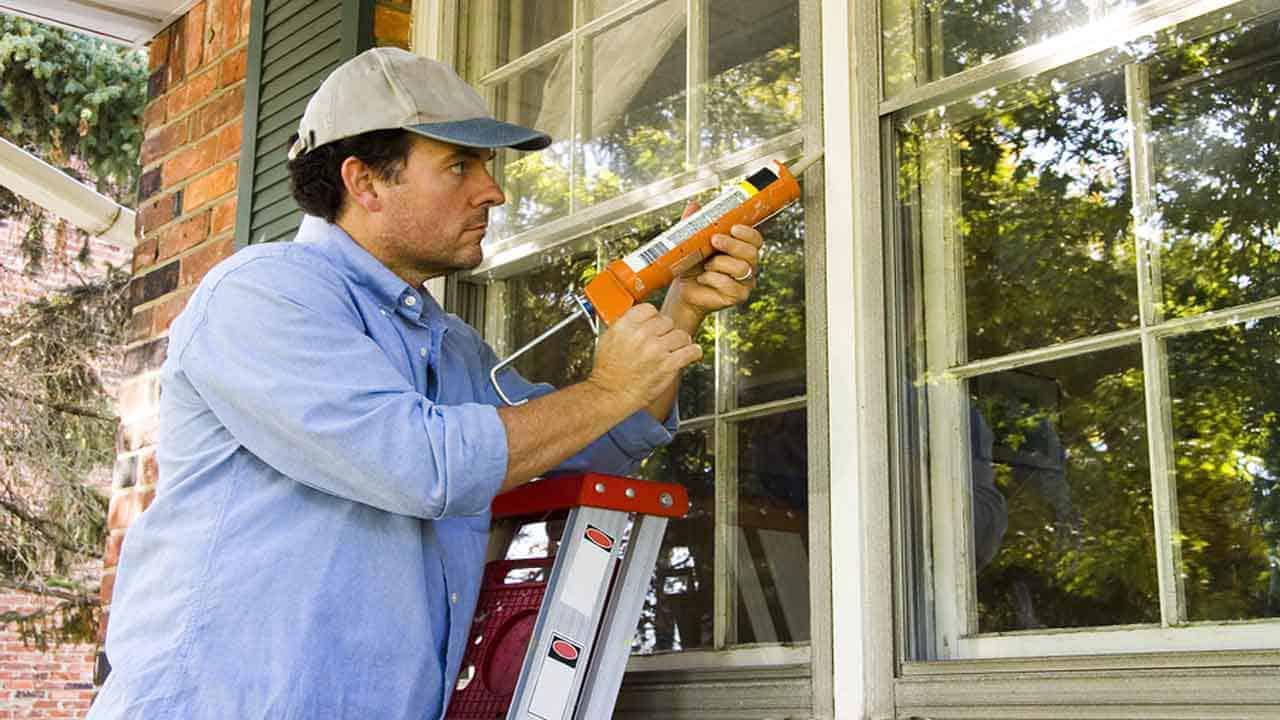
How to Save Money by Weatherstripping and Caulking
In an ideal world, your home would be hermetically sealed, so you could keep your expensive conditioned air in its place and not need to worry about exterior conditions. Yet most American homes (and especially the older ones) are very leaky, and you can waste a tremendous amount of energy by not maintaining a good quality thermal envelope. With energy prices rising and so much pressure on people to become environmentally conscious, you should take steps to address this issue. So how can you save money by weatherstripping and caulking to help your current insulation do its job?
How to Detect Leaks
To start with, you need to do some detective work. An air leak is not always obvious, and it’s unlikely that you’ll be able to see any daylight in between particular surfaces. So, you should begin by inspecting each and every area where different materials meet up. These could include where wooden siding meets brick and the door or window frames meet the glass. You should also inspect the area where the home’s foundation attaches to the walls and the chimney surround.
If you discover any cracks during your inspection, these areas could also allow air to leak in or out and will need attention. Don’t forget to look at utility connections such as phone lines, cable TV, or electrical conduit. Go into the utility room and look at the area where the dryer vent passes through the wall and take an even closer look at the air conditioning system, fans, vents, and other hardware.
You may be able to detect additional leaks by depressurizing your home on a windy day. Once you have shut all the doors and windows, you should turn on any fans that are designed to blow air outside (such as a bathroom fan). Then light a candle and move it around the edges of windows, doors, and other areas. You should discover an issue if the smoke from the candle is blown inwards or sucked outward.
Alternatively, you could bring in experts to conduct a thorough home inspection, as they may be able to carry out a blower door test using a calibrated fan device.
Applying Caulking
Once you have discovered air leaks, you need to take steps to rectify them. You can use a caulking compound in many areas to help you achieve your goals. Caulk is a particularly effective solution, especially around windows and door frames. You can apply it around ceiling fixtures, water pipes, and plumbing as well.
Caulking is a form of flexible sealant, and you can typically buy it in a disposable cartridge that fits inside a caulking gun. You may also be able to find some products in aerosol cans, but the compound comes in different strengths based on the intended use. For example, silicone is good when it comes to sealing between different types of building materials, such as stone versus wood or metal versus brick. A water-based foam sealant is good for tackling smaller cracks or problems around window and door frames. You can also use butyl rubber for concrete, wood, plastic, glass, or metal jobs.
In every case, follow the instructions given by the manufacturer and be ready to quickly clean up the area around your worksite with an appropriate solution. This will help avoid staining, and sometimes you may need mineral spirits, but occasionally water will do.
The Benefits of Weatherstripping
Once you’ve taken care of cracks and imperfections in this way, you should move on to weatherstripping. Here, your aim is to seal any leaks around movable structures, such as doors or windows. You have to choose your weatherstripping so that it can put up with the expected wear and tear at your worksite. It should also be able to deal with temperature swings and any exposure to weather.
The perfect application will allow you to seal the area correctly while allowing the window or door to open freely.
When it comes to a door, apply weatherstripping at the bottom in the form of a door sweep. You may also install a strip along the bottom of the door frame to seal the threshold. You may need to apply weatherstripping around the entire door frame, taking care to ensure that the door can always open and close without any issues. The material should compress neatly when you shut the door. Finally, apply weatherstripping on the top and bottom of each window sash or along the side as appropriate.
What Type of Weatherstripping Do You Need?
You must determine which product is most appropriate for the location. In many cases, vinyl is a good solution as it is tough and can resist moisture. For example, you can get more durable products made from stainless steel or aluminum, which are relatively affordable and can last for years. You might want to use these on a door sweep and apply them to the inside of a door that swings inward or otherwise to the outside of the door.
Some people install magnetic weatherstripping products that are similar to the gasket you’ll find inside a refrigerator. You can apply these to the top or the side of a door and to any windows that slide back and forth within a channel.
These are just a few examples of many different weatherstripping products. Each type is recommended for a certain application, and the costs can vary from relatively expensive to high. Once you have made a list of all your problem areas, research the different products as well as their advantages and disadvantages.
Recapping the Benefits of Caulking and Weatherstripping
Caulking and weatherstripping can be very advantageous when it comes to saving money, lowering your utility bill, and keeping your carbon footprint in check.
Getting Help
If you’re unsure how energy-efficient your home is or would like some professional guidance before making any big decisions, bring in a home consultant. Get in touch with Pro Inspect Solutions if you’re in the Orlando area, and we will be delighted to help.



